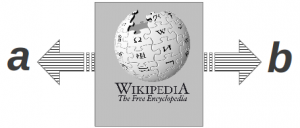Armin Sajadi
Dr. Evangelos Milios – Faculty of Computer Science
Dr. Vlado Kešelj – Faculty of Computer Science
Dr. Jeannette C.M. Janssen – Mathematics & Statistics
 Semantic Relatedness is a relationship between a pair of concepts. This relation can be well known taxonomic relations (i.e. is-a) or any non taxonomic relation such as antonymy, meronymy (is-a-part-of) or domain specific relations, such as is-treated-by and is-caused-by in the biomedical domain.
Semantic Relatedness is a relationship between a pair of concepts. This relation can be well known taxonomic relations (i.e. is-a) or any non taxonomic relation such as antonymy, meronymy (is-a-part-of) or domain specific relations, such as is-treated-by and is-caused-by in the biomedical domain.
This relation is the key answer to the question of Knowledge Acquisition, and one of its forms, learning new vocabulary from a context. This problem has been a mystery over the history of philosophy and later, psychology. It became of interest in computer science for two reasons (i) Computational methods can shed light on the problem (ii) It is applicable in many real world applications.
Studies in both general domain and biomedical domain show that ontology-based methods outperform corpus based methods and are even more practical. On the other hand lexical resources are not available for most domain. We are interested in various aspects of Wikipedia as resource for this problem, ie. its suitability, the applicability of relatedness methods on Wikipedia and improving on them.
Published Reports
Armin Sajadi, Evangelos E. Milios, Vlado Keselj, Jeannette C. M. Janssen:
“Domain-Specific Semantic Relatedness from Wikipedia Structure: A Case Study in Biomedical Text”. CICLing (1) 2015: 347-360 (bib, pdf)
Armin Sajadi, “Graph-Based Domain-Specific Semantic Relatedness from Wikipedia”, Canadian AI 2014, LNAI 8436, pp. 381–386, 2014 (bib, pdf)
Awards
Verifiability, Reproducibility, and Working Description Award, Computational Linguistics and In- telligent Text Processing, 16th International Conference, CICLing 2015, Cairo, Egypt, April 14-20, 2015
Not Published Reports
Graph-Based Domain-Specific Semantic Relatedness from Wikipedia, Research Aptitude Defence Report, Dalhousie University 2014 (password protected)
Detailed Technical Report, Dalhousie University, oct 2014, In progress (password protected)
